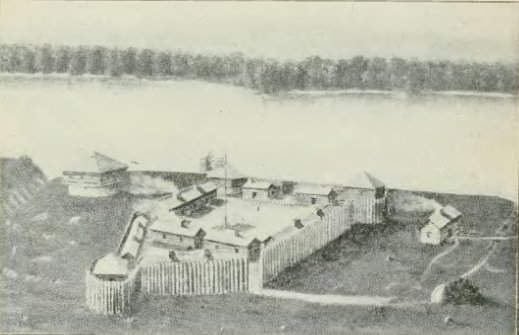Road Trip Through History: Old Fort Madison
And now, back to the Great River Road after a brief detour to South Africa at the end of the nineteenth century:
We got to Old Fort Madison, outside what I suppose would be called new Fort Madison Iowa, shortly before the site closed. We had driven past the town where we planned to stay the night because the fort was going to be closed the next day and we didn’t want to miss it. We had to backtrack and dead-reckon our way through road construction, which all took time. And it was so very worth it.*
The fort that you visit today is a reconstruction of the historic fort, which was built by inmates of the Iowa State Penitentiary in the 1980s. (There has to be a story behind that !)
The original fort was built in 1808 as a government trading post, partial payment for the lands “ceded” to the United States in the infamous and illegal treaty of St. Louis in 1804. It was part of a government system of trading posts (called factories at the time) that ran from 1795 to 1822, on the theory that fairly priced goods and access to services such a a blacksmith to repair rifles would build good relations with Native American nations and counter British influence.** It was the third highest grossing factory in the system between 1808 and 1811. (Neither of us had heard of this government-trading system before. It was the big take-away of the stop.)
The War of 1812 ended the fort’s existence as a trading post. INative Americans allied to the British attacked it in March, 1812, and again that September, when it was one of three forts attacked by simultaneously Tecumseh’s confederation.*** The besieged fort held out for four days, but the trading post was burned down.
With the trading post destroyed, the primary purpose of the fort no longer existed. Instead the fort served as a forward defense for settlements along the Salt River and an intelligence gathering outpost for the army. The fort was attacked twice more in July, 1813. At the same, the fort’s supply system failed. By November, the garrison’s supplies were reduced to rotten pork and potatoes. With winter on the horizon, the fort’s commander ordered his men to burn the fort and withdraw to Saint Louis.
*Another stop that turned out to be better than we had any reason to expect, in large part because of a knowledgeable and and enthusiastic docent—a recurring theme of this trip.
**Though honoring treaty agreements would have worked better. Congress ended the system on May 6, 1822, in response to lobbying pressure from the American Fur Trade Company. Fairly priced trade goods became a thing of the past.
***I could have sworn I had written a blog post about Tecumseh and the Shawnee Prophet. Evidently not. Here’s the thumbnail version: Around 1805, a member of the Shawnee nation named Tenskawatawa began to preach a message of religious and cultural revival. Claiming to have seen a vision from the Great Spirit, he taught that if the Native American peoples abandoned the ways they learned from the Europeans and returned to their traditional customs, they could overcome the settlers who were stealing their land. (Am I the only one who sees similarities to Joan of Arc?) Tenskawatawa became known as the Shawnee Prophet, and his message spread through the Great Lakes region.
Under the leadership of the Prophet’s brother Tecumseh, the religious movement because political. Tecumseh wanted to create a confederation of Native American nations that would be strong enough to prevent the movement ofAmerican settlers into the western territories. Not surprisingly, Tecumseh’s confederation and the United States soon butted heads—a conflict that played out against the background of the War of 1812 and ended only with Tecumseh’s death on October 5, 1813.






So the Pope can come forward and beg forgiveness, but the US. Politicians cannot. Who’d of thunk it? This makes history something no one should poo, pooo!